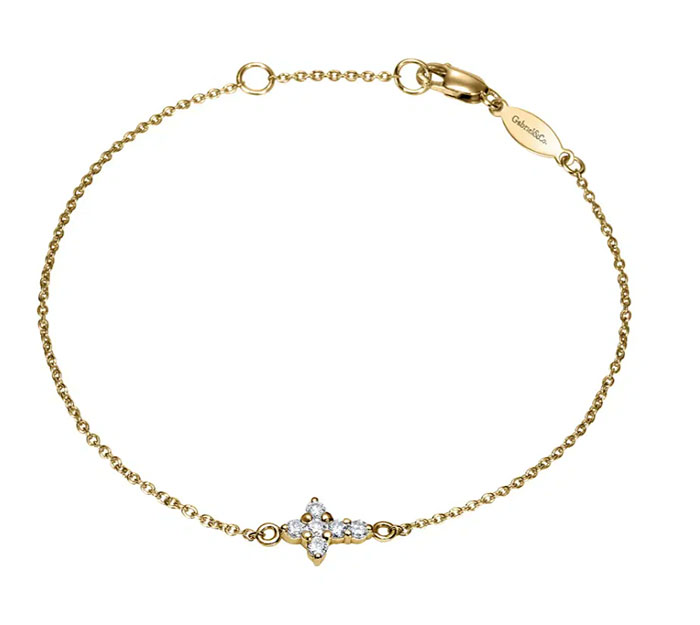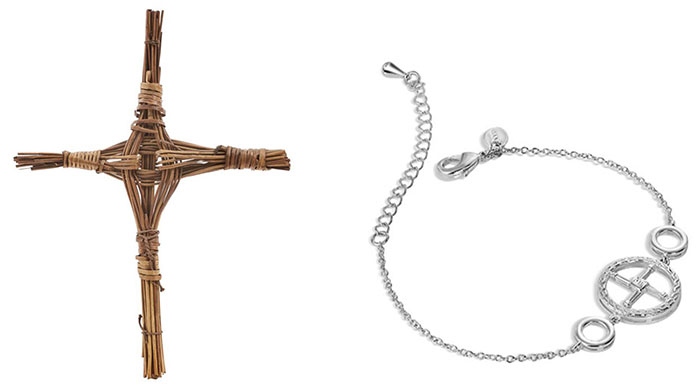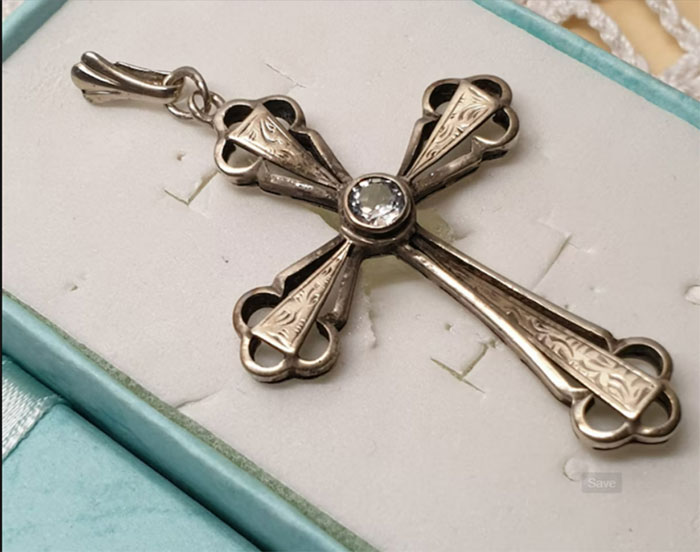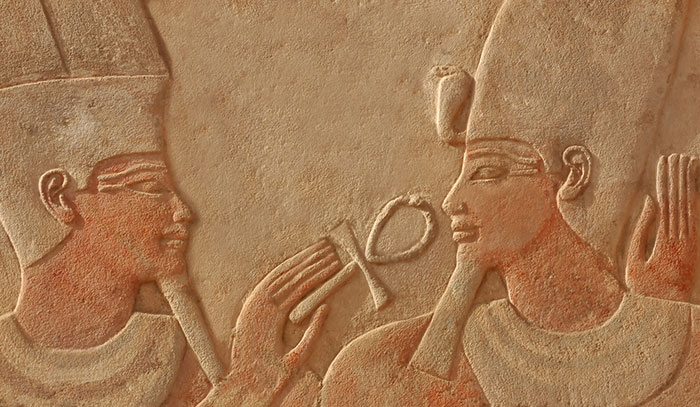Cross bracelets have had, over time, quite a profound and multifaceted appeal to women. It extends far beyond mere ornamentation. The cross itself though associated often with Christian symbolism extends back into antiquity. Crosses in jewelry can be traced back to civilizations long before the advent of Christianity.
To truly understand the origins of cross bracelets, let’s take a journey through time, and explore both their history and diverse meanings across the centuries and different cultures.

The Origins of the Cross in Jewelry
Long before the cross became synonymous with Christianity, many ancient societies used cross like symbols. In Egypt, the ankh, with its distinctive looped top, represented both life and immortality. It is often depicted in the hands of deities and pharaohs.

Similarly, in Mesopotamia, the crux ansata, bears a striking resemblance to the ankh. To that culture it symbolized life and fertility associated with the goddess Ishtar. These early symbols, characterized by their intersecting lines, suggest a fundamental human inclination to find meaning in their lives and to the world around them.
Perhaps they were inspired by observations of the natural world or ancient held cosmological beliefs. The presence of such symbols in ancient adornment indicates a long-standing tradition of using objects worn on the body for spiritual purposes – like amulets which were believed to offer protection. Or as indicators of status and rank.
The adoption of the cross as the central symbol of Christianity marked a significant turning point in its history. Representing the crucifixion and subsequent resurrection of Jesus Christ, the cross became a potent reminder of sacrifice and salvation.
In the early days of Christianity, when believers faced persecution, the cross was replaced with the Chi-Rho, a monogram using a combination of the first two Greek letters of “Christ”) These early symbols served as expressions of devotion while also carrying hidden meanings that provided solace and a sense of community during perilous times. As Christianity gradually gained acceptance, its incorporation into jewellery, necklaces, and bracelets increased.
The Evolution of Cross Bracelets

In the early Christian and Byzantine periods, cross bracelets most likely took simple forms, consisting of bands made from materials like leather or base metals with small crosses attached or engraved upon them. The Byzantine era was known for its rich iconography and a host of intricate designs in Christian art.
While surviving examples from these early periods might be scarce, the strong connection between Byzantine art and jewelry suggests that early cross bracelets would have featured symbolic motifs and meticulous craftsmanship.
During the Medieval period, the Celtic cross reigned in Ireland and Scotland, with its intricate interlacing patterns and a central circle. The Celtic blended Christian symbolism with local cultural traditions. The widespread belief in the protective power of the cross during this era likely contributed to the personal wearing of cross bracelets as talismans for spiritual safeguarding.
The Brigids cross which is made in many communities around Ireland every February honors and Irish woman who lived in the 5th century. Its unique design woven from rushes has an unusually prescient look to it which echoes the Art Deco era of the 1920s.
Cross Bracelets in the Victorian and Art Nouveau Era
In the Victorian era, cross pendants became smaller and more intricate, often incorporating floral motifs, enamel details, and delicate gemstone accents. This trend likely extended to bracelets, with smaller, more refined cross designs becoming popular, often gifted as tokens of love and remembrance.

The Art Nouveau movement which emerged in the 1890s, was in a sense a reaction to an increasingly industrialized world of trains, trams and steam engines. It was the antithesis of mechanical world which sought beauty in the natural world. This modern aesthetic deeply affected the jewelry designs of the early 20th century.
Art Nouveau jewelry distinctively feminine in nature and often used as inspiration the curves of a woman’s figure as well as dragonflies, trees. vines and floral designs. There are many examples of cross bracelets from the Art Nouveau era to be found on Ebay and other auction sites.
Art Deco Jewelry
After WW1 art design then merged with industrial geometric shapes to produce what was quickly dubbed Arts décoratifs or Decorative Arts ( in the 1920s), and later in the 1960s,it became known simply as Art Deco. While the Art Deco period is predominantly associated with its geometric and culturally inspired motifs, cross designs were still found on jewelry notably on charm bracelets.
Cross Bracelets: Why Their Popularity Endures
Today, cross bracelets, like many iconic jewelry designs are trending. While they still hold spiritual significance to many, the cross symbol resonates to many for a variety of reasons. By its bold statement, its cultural heritage and as a symbol of hope and faith. Ultimately a woman might be drawn to a cross bracelet for a combination of these reasons, finding in it a symbol that expresses with her individual beliefs, values, and style.
That’s all © Glamourdaze
